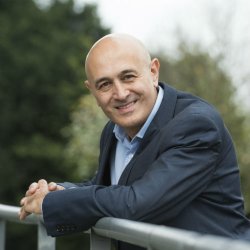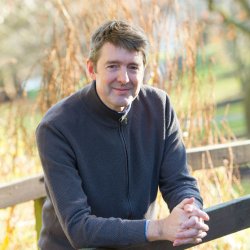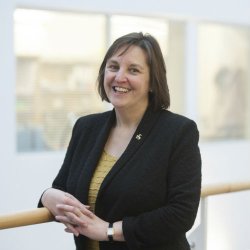The science of Star Wars
Could spaceships really travel faster than light? And what would happen in a real-life lightsaber fight? To mark the release of Star Wars: The Last Jedi, Surrey experts in physics, space systems and engineering explore the facts behind some of the greatest fantasies in science fiction.
Star Wars: fact vs science fiction
In our Science of Star Wars videos, University of Surrey academics and Star Wars fans Professors Jim Al-Khalili, Yang Gao, Ben Murdin and Julie Yeomans discuss the science behind Star Wars and how far what you see on screen is from reality.
Episode I: Phy-ction
Jim Al-Khalili, Professor of Physics and Professor of Public Engagement in Science, explains the physics of hyperspace and how it may be possible for spaceships to travel faster than the speed of light.
Discover our physics degrees and research within the Department of Physics.
"Einstein’s special theory of relativity tells us quite categorically that nothing can travel through normal space faster than the speed of light. The only option, therefore, is to find a shortcut that takes you out of normal space – a wormhole."
Professor Jim Al-Khalili
Episode II: Droids
Yang Gao, Professor of Space Autonomous Systems, discusses the current role of robotics and the fascinating future of robots in space.
Find out about the Surrey Space Centre.
"Looking into the future, different kinds of robots will work side-by-side with humans to materialise our goals and ambitions to explore the new frontiers of space."
Professor Yang Gao
Episode III: Lasers and lightsabers
Ben Murdin, Professor of Physics, unravels the physics of lightsabers and what would happen in a real-life lightsaber fight.
Discover our physics degrees and research within the Department of Physics.
If a real lightsaber’s laser light was red or blue, like in the films, the light would keep going for miles and maybe punch a hole in the roof, the floor or even slice off your own toes.
Professor Ben Murdin
Episode IV: Body armour
Julie Yeomans, Professor of Ceramic Materials and Head of the Department of Mechanical Engineering Sciences, tackles the subject of body armour and protective suits, and explains how Surrey research is contributing to the development of materials that could save lives.
"In the real world, armour has to deal with a growing variety and increasing severity of threats. Surprising though it may seem, for the best possible protection in terms of ballistic resistance for a given weight, ceramics are the materials of choice."
Professor Julie Yeomans
Our Community Orchestra is also celebrating Star Wars by inviting local musicians to join them for an Orchestra Day on Sunday 28 January, where they will be rehearsing and performing music from Star Wars by John Williams, as well as pieces from Batman by Danny Elfman.






